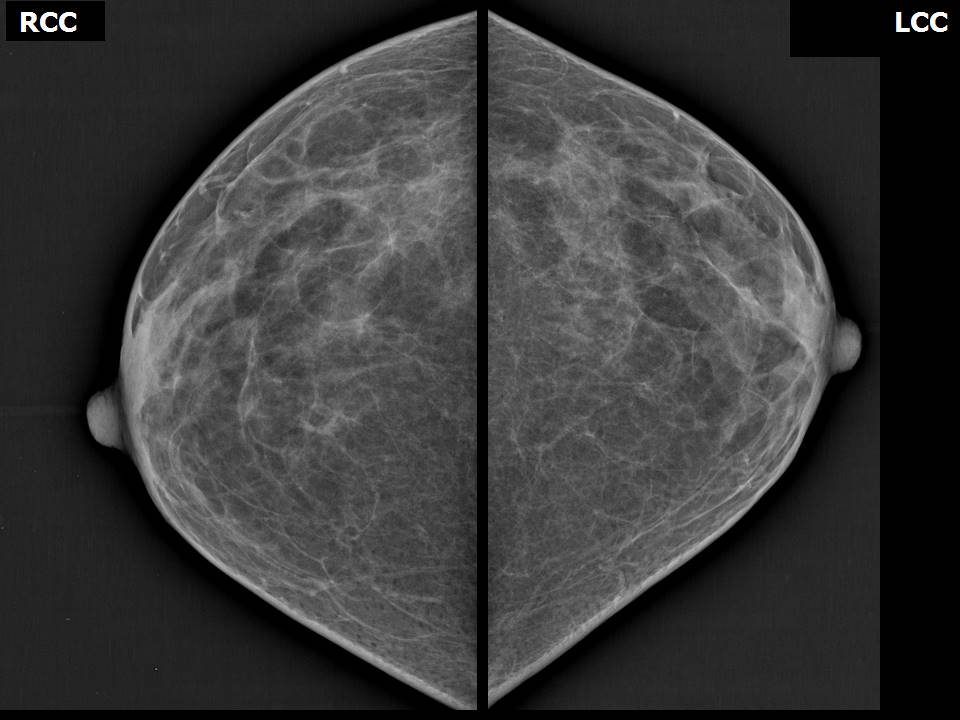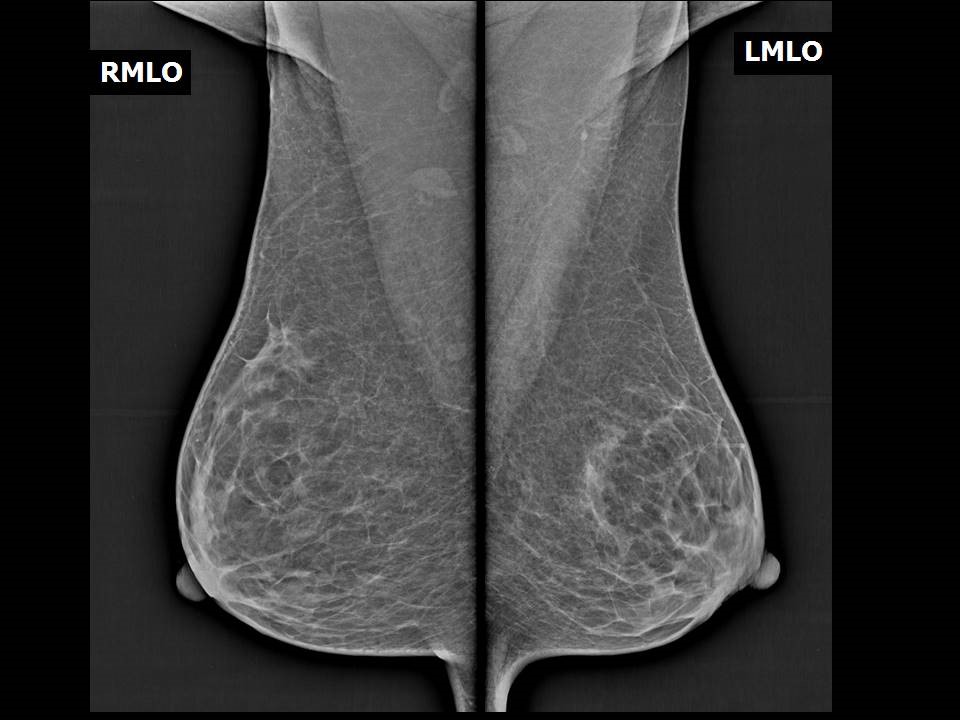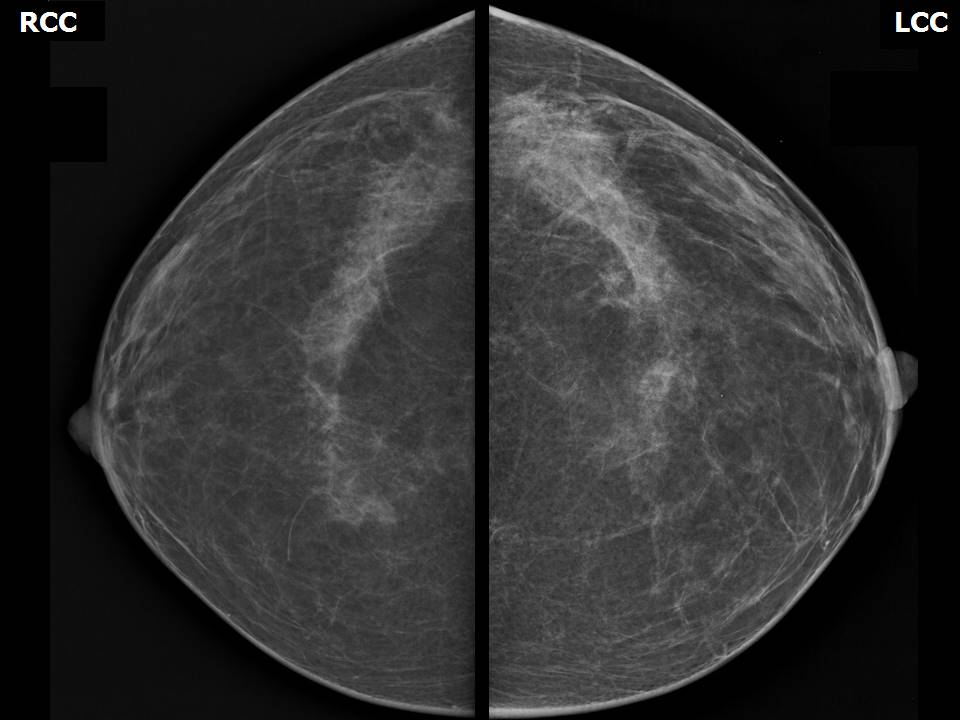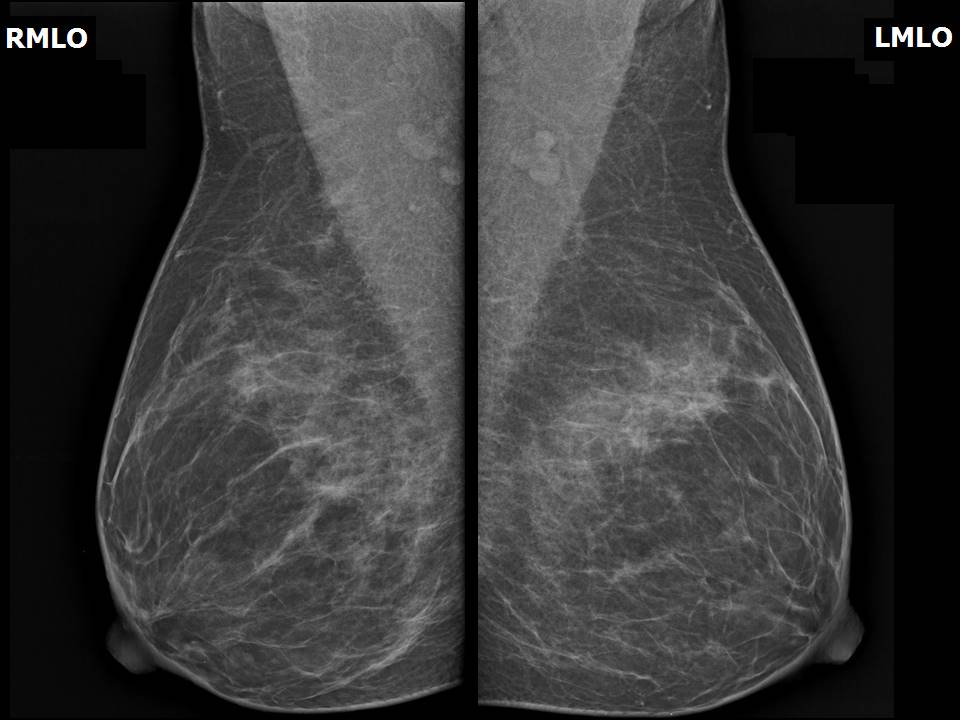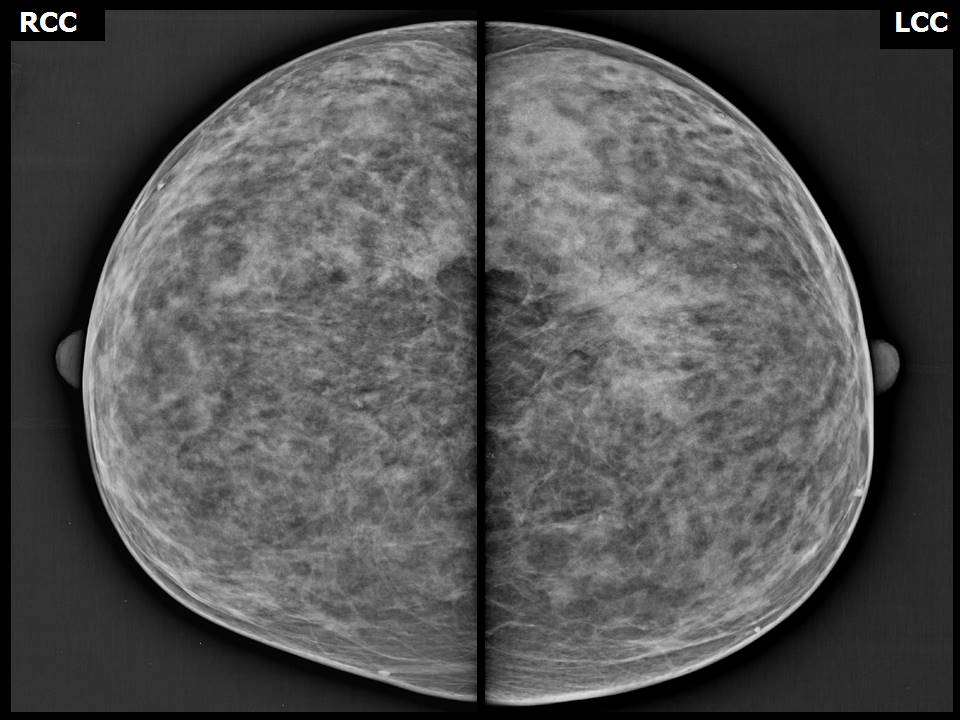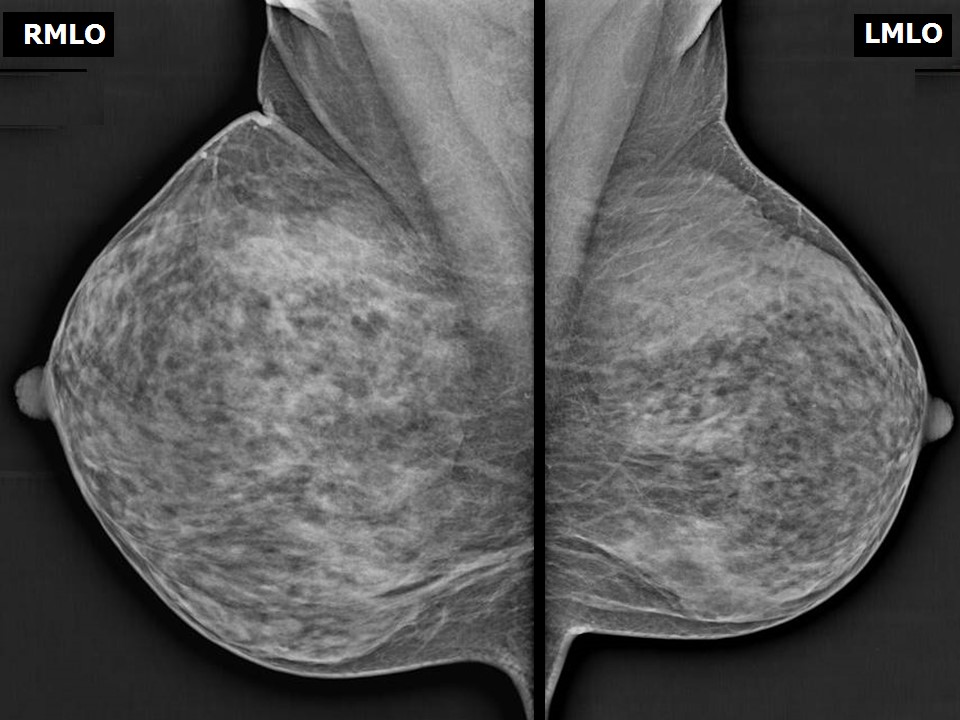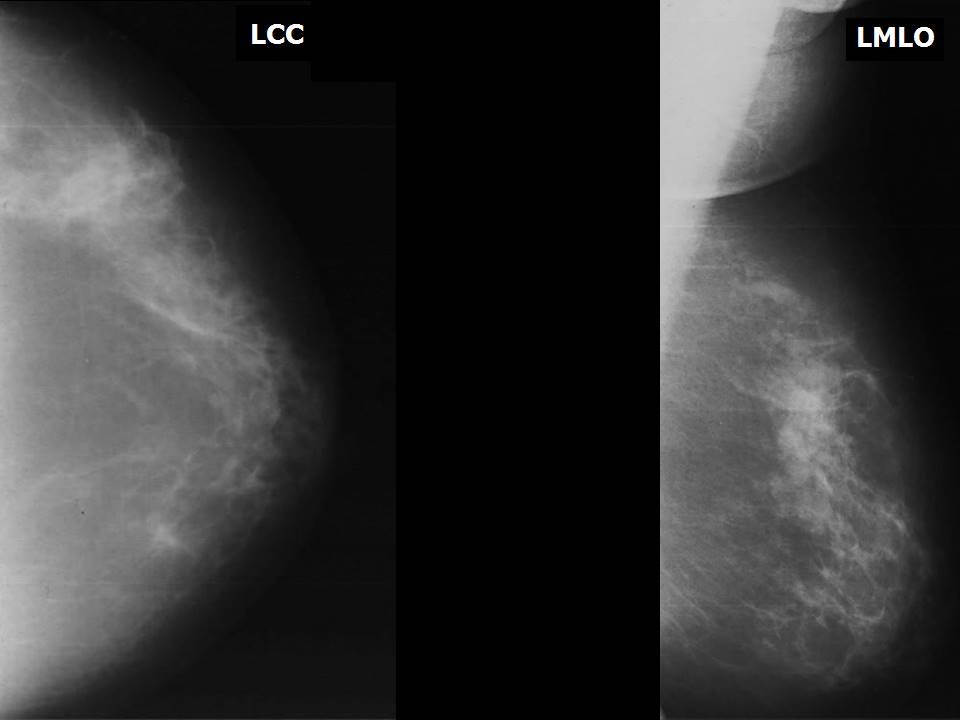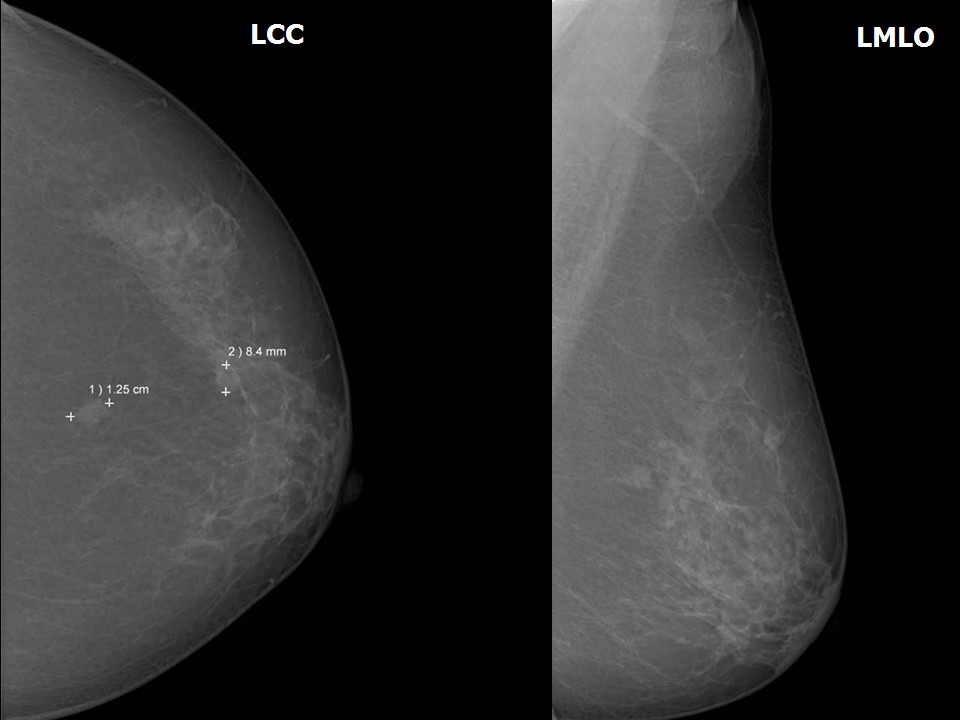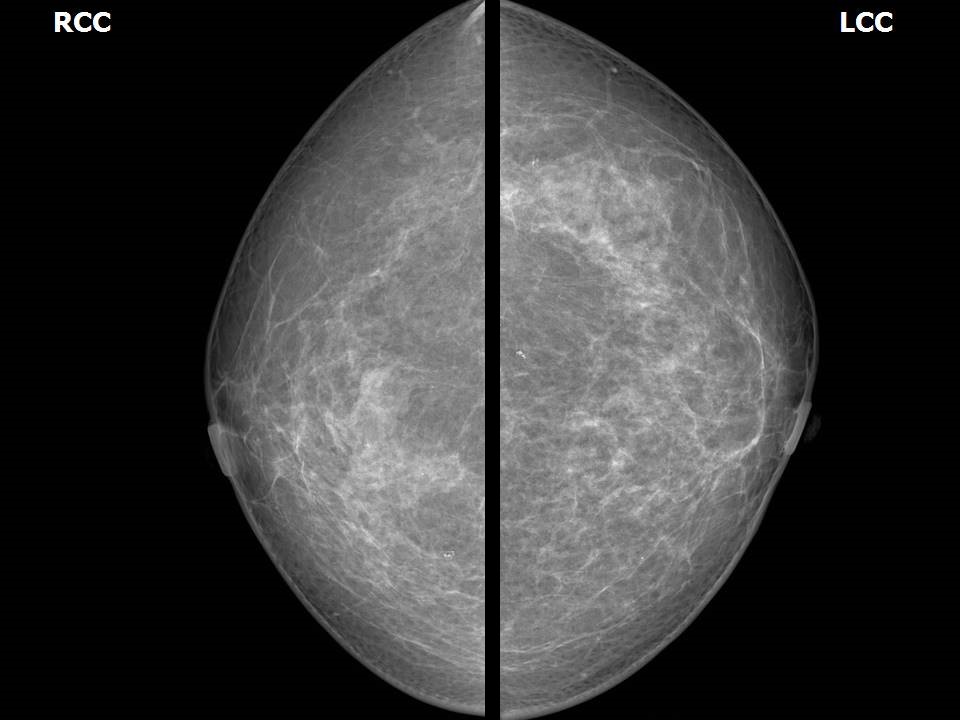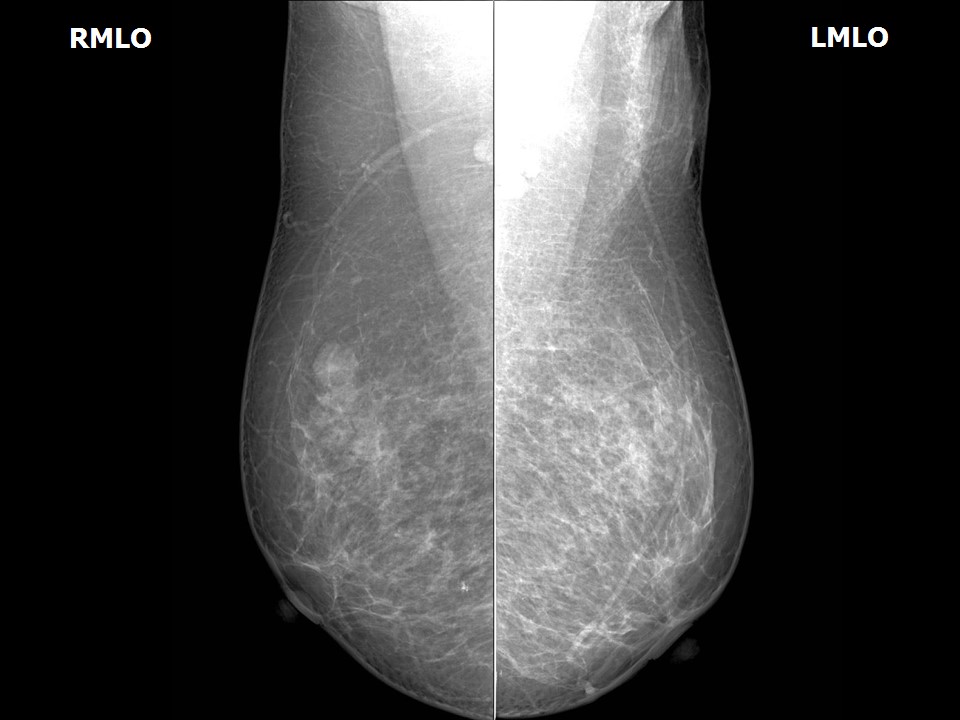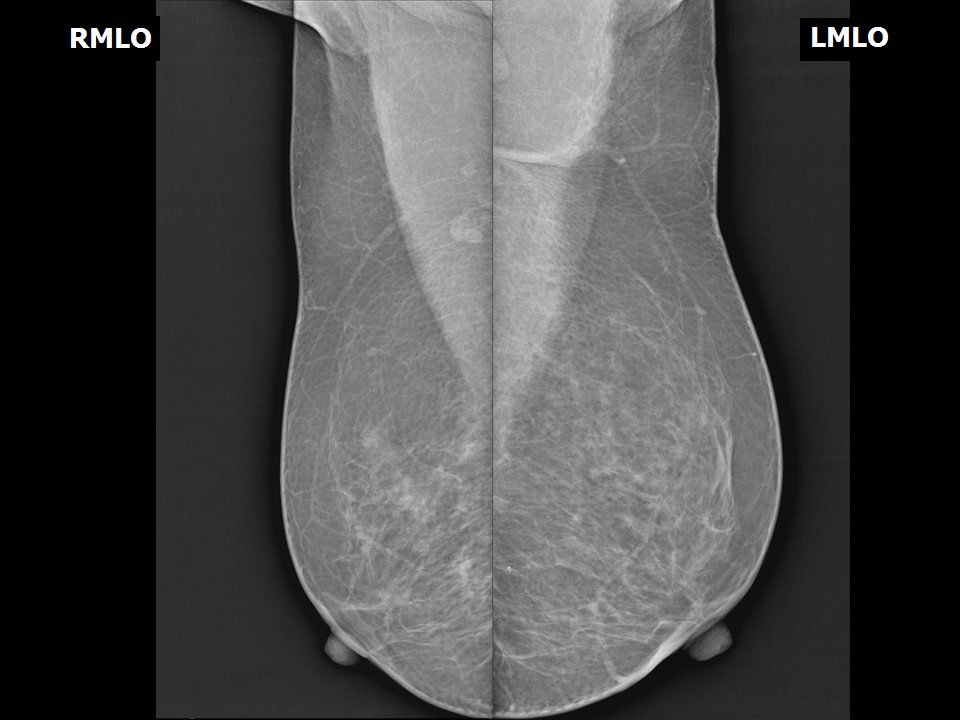Home / Training / Manuals / Atlas of breast cancer early detection / Learning
.png)
Click on the pictures to magnify and display the legends

Click on this icon to display a case study
Atlas of breast cancer early detection
Filter by language: English / РусскийBreast imaging – Mammography interpretation – Getting organized |
Prerequisites for image interpretation
Normal mammogram Bilateral breast mirror images Bilateral symmetrical breast tissue Asymmetrical breast tissue Developing asymmetry For women with a high risk of developing malignancy who attend for regular screening mammography, it is important to retain earlier mammographic images for accurate interpretation. The images are viewed sequentially, the older CC with the recent CC views and the same for the MLO views. Clinically occult small early cancer may be detected as a developing asymmetry. Focal asymmetry Screening mammograms in women with high risk of developing breast cancer may reveal focal asymmetrical breast tissue. Regular follow-ups at short intervals are recommended to monitor the stability or regression of these mammography findings. The likelihood of breast cancer can thus be ruled out. |
Click on the pictures to magnify and display the legends
Click on this icon to display a case study
25 avenue Tony Garnier CS 90627 69366, LYON CEDEX 07 France - Tel: +33 (0)4 72 73 84 85
© IARC 2025 - Terms of use - Privacy Policy.
© IARC 2025 - Terms of use - Privacy Policy.




